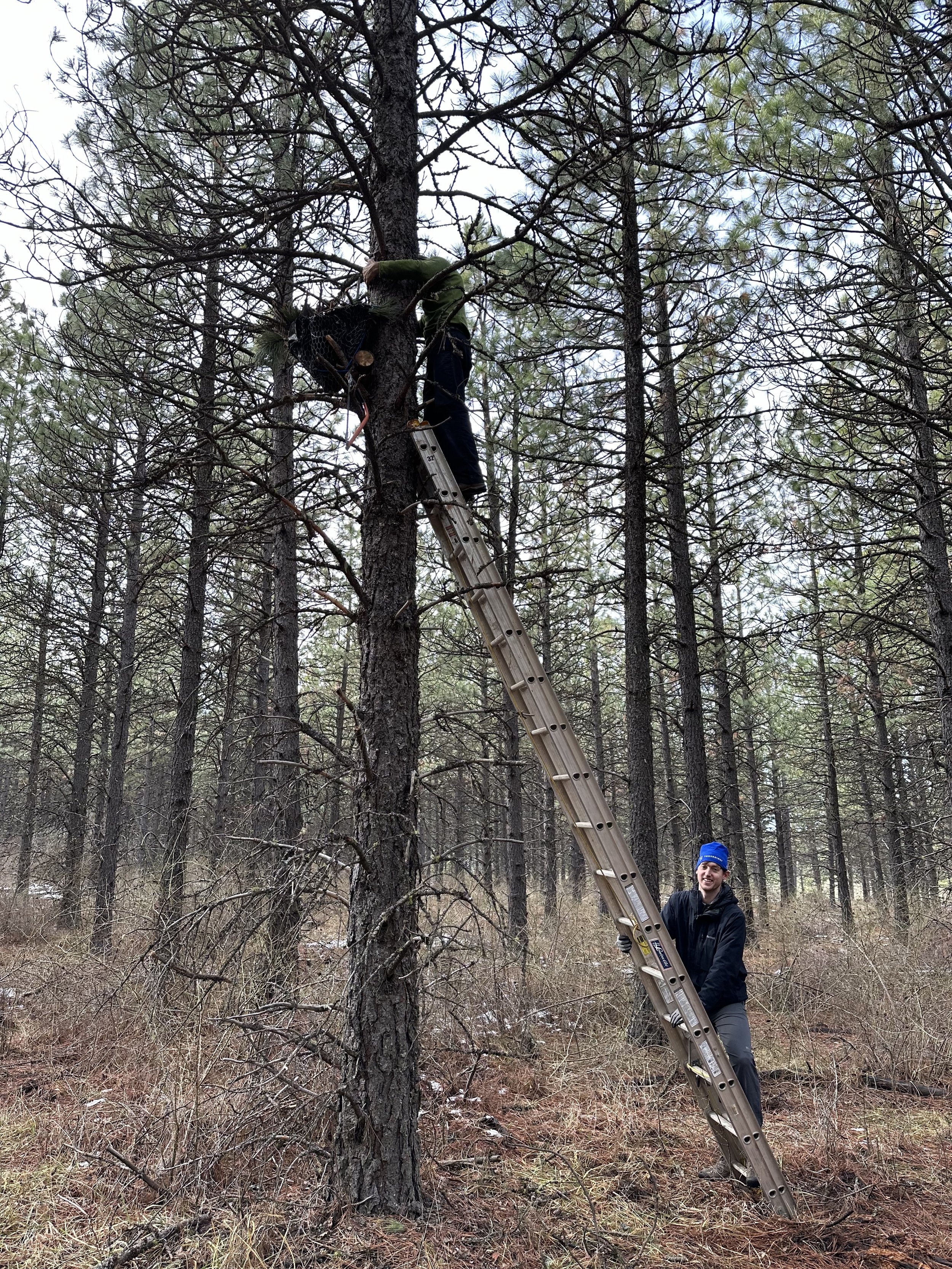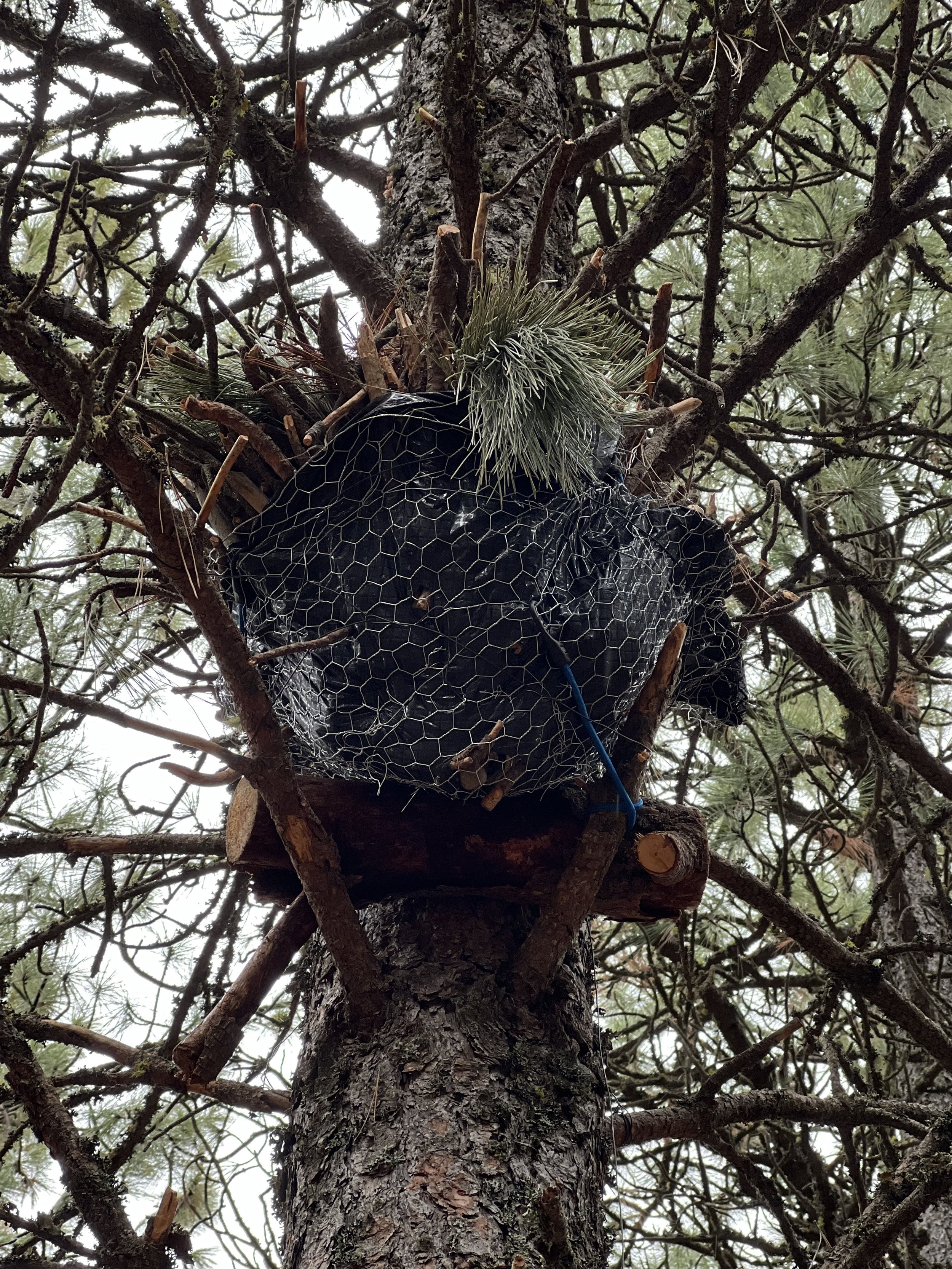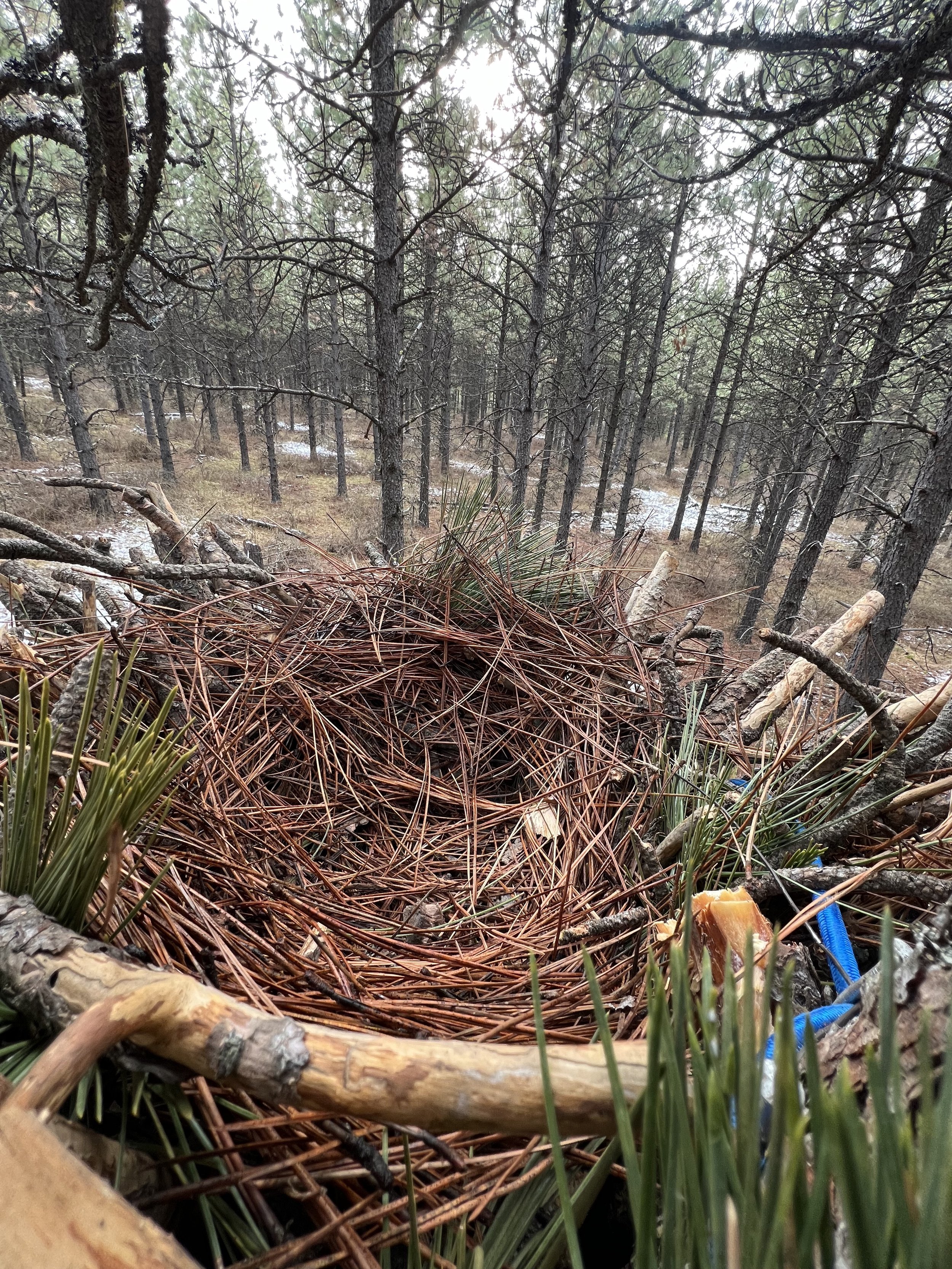
Rebuilding Original Biodiversity
Conservation At Our Core
Jasper Mountain Reserve is managed under an ecologic timber management plan intended to maintain and re-establish the area’s original biodiversity. We are actively pursuing a conservation easement that permanently restricts the development and certain land use rights of this property, ensuring it remains in its natural state and is used in a manner consistent with our conservation goals.
This conservation easement will bind both current and future property owners to restrict any developments. Conservation easements are an important tool in preserving ecologically significant areas and maintaining natural spaces while allowing landowners to own and use their land for ecologically-focused purposes.
Our Flora
Jasper Mountain Reserve’s diverse and, in some cases, endangered flora delivers awe-inspiring beauty. Highlights include flourishing populations of the Phantom Orchid, Calypso Orchid, and Coralroot. Seasonally, the slopes towards the South Touchet River are adorned with azure expanses of Camas Lily, blush-hued carpets of Wild Onions, and crimson patches of Indian Paintbrush.
Our commitment extends beyond unique botanicals to the holistic health and biodiversity of the entire forest ecosystem. In the coming decades, we aim to transition certain stands of planted Ponderosa Pine monoculture towards a mixed coniferous forest that incorporates other native species such as Douglas Fir, Grand Fir, and Western Larch. We will restore natural grasslands and rocky canyon slopes, reclaiming them from invasive species like Yellow Star Thistle and encroaching Sweatbriar Rose bushes. Additionally, we plan to rejuvenate old, desiccated cattle ponds, creating vital riparian habitats to support the needs of rare avian species and other wildlife within the reserve.
From Monoculture….
Within forestry, "monoculture" refers to the practice of exclusively cultivating a single tree species. At Jasper Mountain Reserve, vestiges of Ponderosa Pine monoculture persist from bygone logging efforts, when they were established for efficient, unified harvesting. Monocultures present ecological challenges, offering meager resources for wildlife relying on a range of habitats and heightening vulnerability to insect threats, exemplified by susceptibility to the Western Pine Park Beetle.
…to Natural Forest
Our vision is to transform a planted monoculture back into a thriving, natural forest, reminiscent of the diverse woodlands of centuries ago. Our goal is a forest that serves as a haven for birds, insects, plants, and other wildlife, with sparse tree density, expansive clearings and a patchwork of wetland areas resilient against complete devastation in the face of catastrophic wildfires. Our forest will enhance water quality, exude natural beauty, and offer recreational opportunities for generations to come.
From Invasive Plant Infestations….
Plant invasions pose a multifaceted threat, imperiling native plant species that have long thrived within the Blue Mountain ecosystem. Cattle grazing, which is deeply embedded in the history and culture of the Intermountain West due to the native grasslands preferred by cattle, has had a significant impact on the spread of invasive plants such as the Sweetbriar Rose (Rosa rubiginosa). While cattle prefer native grasses, this rose fruits towards the end of summer when grasses dwindle after months of dry heat. As a result, cattle consume the rose hips and spread their seeds widely via their dung, a perfect fertilizer for the rose seeds to sprout and grow.
…to Re-Introduction of Native Species
We intend to work with adjacent cattle ranchers to conclude the grazing period slightly earlier, just before the Sweetbriar Rose reaches its fruiting stage, to disrupt the cycle of seed dispersal. This proactive measure supports the preservation of native grass- and timberlands while harmonizing with the long-standing tradition of cattle grazing. We are committed to reversing the invasion of noxious weeds, eradicating acres of Sweetbriar Rose to allow native species such as Snowberry to flourish. We are reclaiming the ecosystem's ecological balance and preserving the intrinsic beauty and resilience of the Blue Mountains.

Our Birds
Jasper Mountain Reserve is committed to non-consumptive tourism, prohibiting hunting within its boundaries. Between the elimination of noise disturbances and our conservation efforts, sightings of rare and endangered species, particularly avian fauna which now successfully breed within the reserve, have increased significantly. Lucky visitors will encounter the elusive Great Gray Owl (Strix nebulosa), the graceful Northern Harrier (Circus hudsonius), the vibrant Mountain Bluebird (Sialia currucoides), as well as migratory wonders like the Solitary Sandpiper (Tringa solitaria) and the very sociable Cedar Waxwing (Bombycilla cedrorum), just to name a few. Trails that wind through the diverse habitats of the reserve offer visitors unparalleled opportunities to connect with nature and witness its rich biodiversity.
Great Gray Owl
Cedar Waxwings
Solitary Sandpipers
A Conservation Snapshot:
The Great Gray Owl (Strix nebulosa)
Jasper Mountain Reserve hosts a stable Great Gray Owl population. Measuring up to 27 inches in length, the Great Gray Owl is the largest owl in North America . It has a distinct appearance, with lightly mottled plumage, speckled with lighter gray, tan, and white, blending into wooded environments. Its large head lacks ear tufts, and it has an especially large facial disk and piercing yellow eyes.
This species is identified as a Species of Greatest Conservation Need (SGCN) under the Washington State Wildlife Action Plan (SWAP). The population of this rare owl in Washington is estimated to be very small, (likely fewer than 20-40 territories). Other than the Blue Mountains in the southeast of the State, it is a rare local breeder in areas of northern Washington. Source: WDFW
The Great Gray Owl requires dense forest cover adjacent to semi-open habitats for hunting. Habitat loss resulting from forest clearing, especially the removal of vital snags crucial for nesting, is the foremost threat to this species’ survival. Through our commitment to sustainable forestry practices and the installation of man-made nesting platforms tailored to this endangered owl, we are safeguarding its breeding success.










